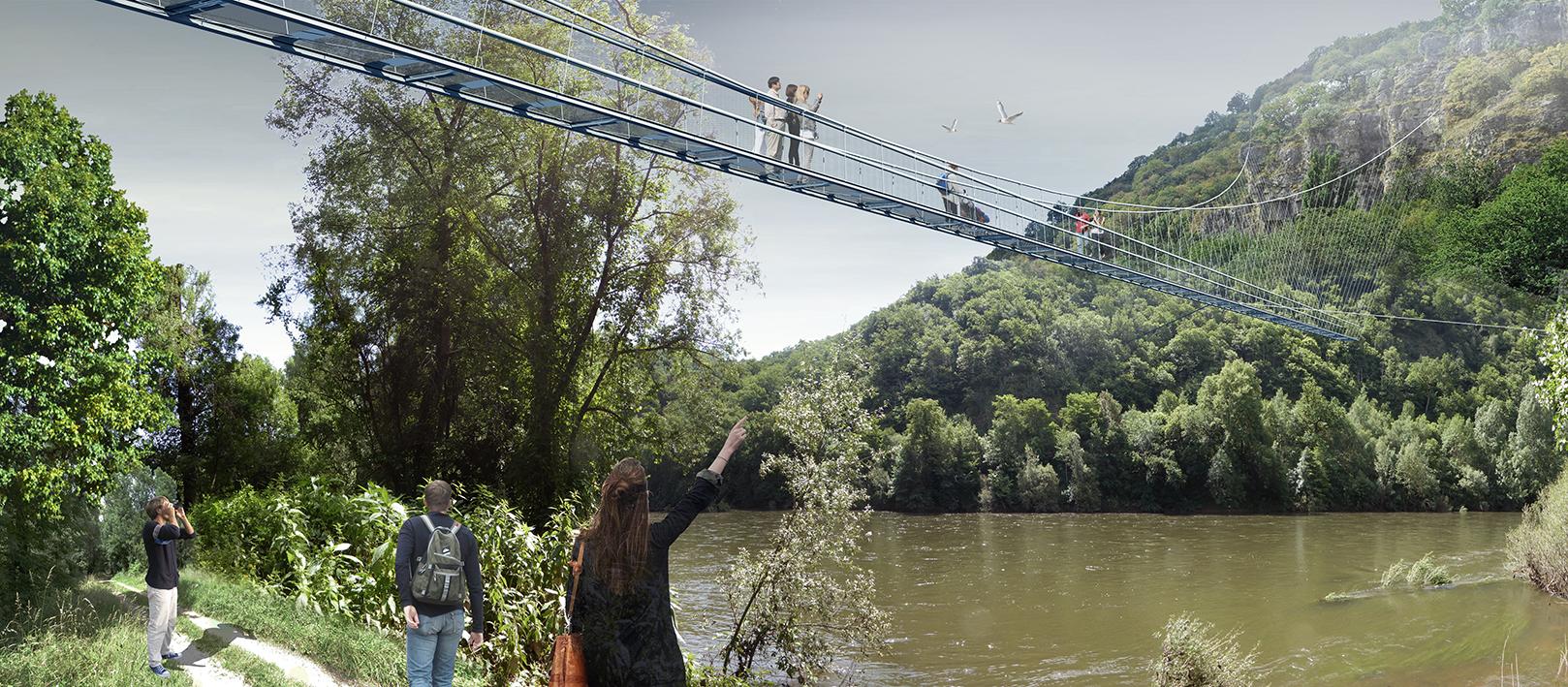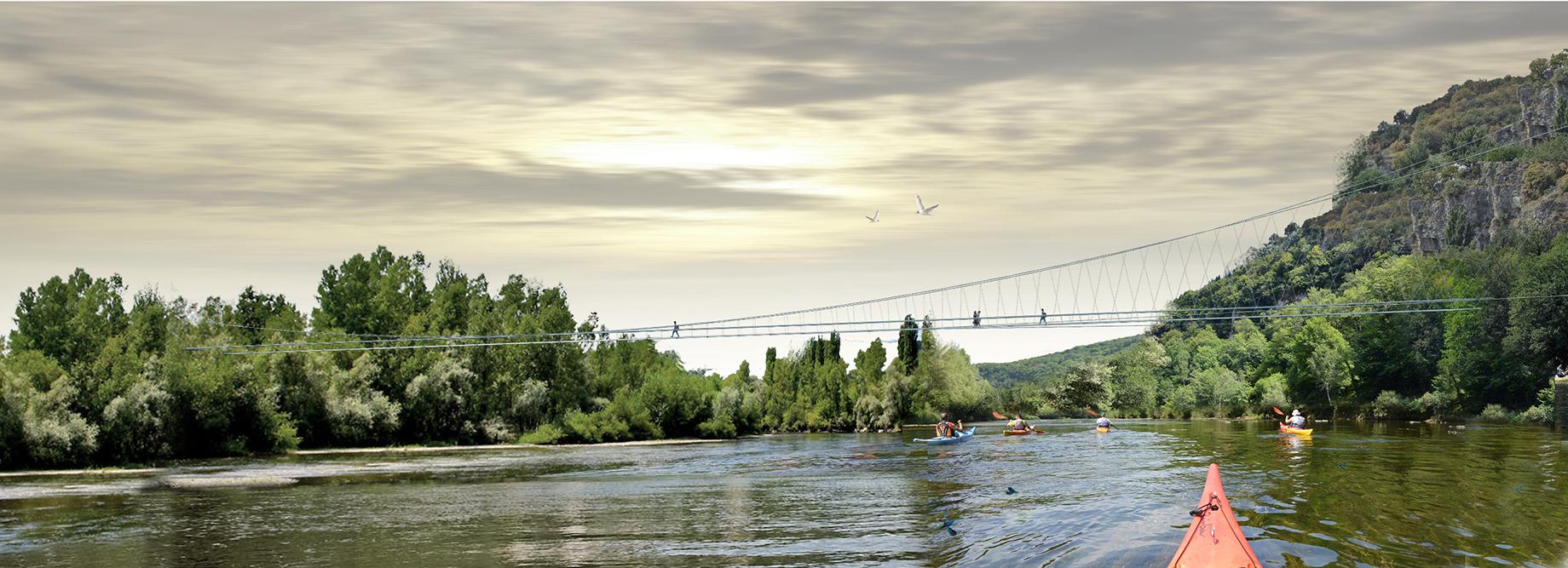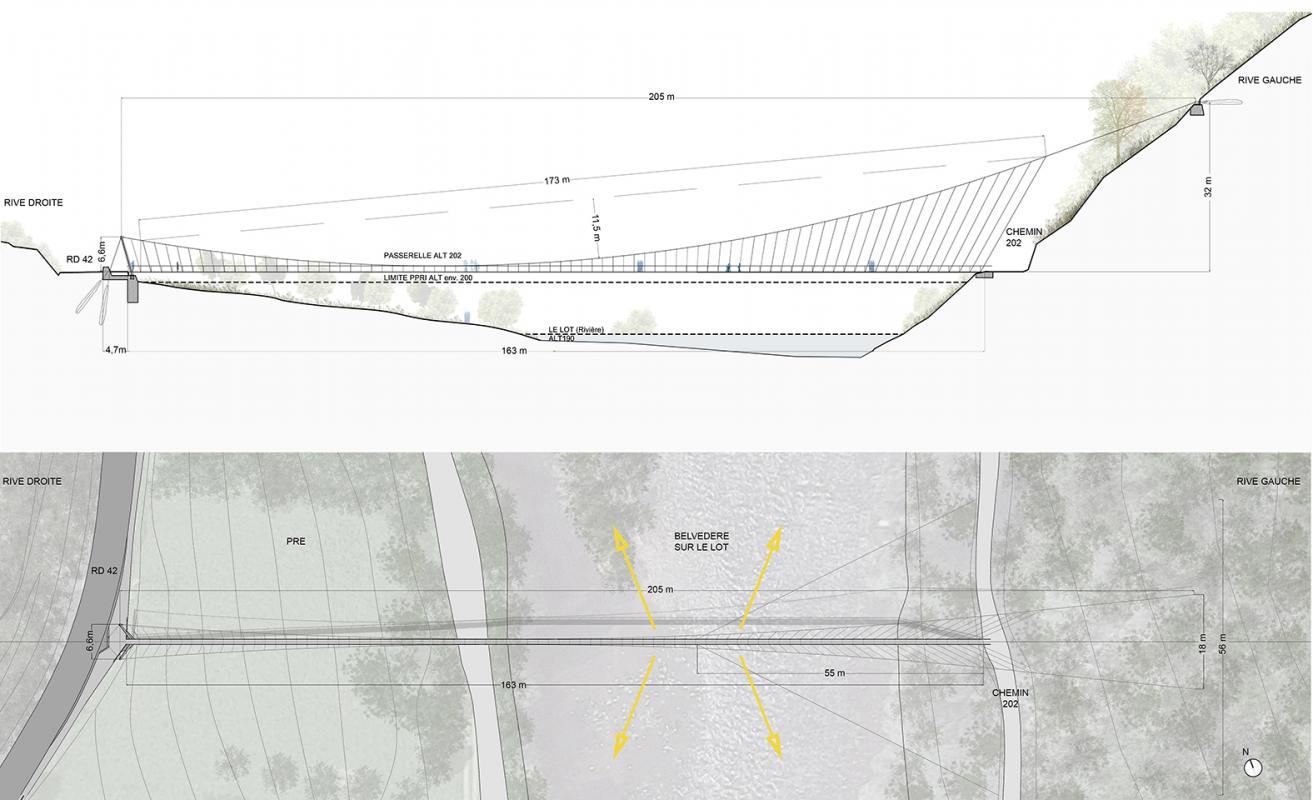Himalayan footbridge
Competition for a suspension footbridge in the Lot Valley
The two banks of the site have distinct characteristics: on one side, the river borders the village of Saint-Parthem, while on the other, access to the banks is more challenging due to steep slopes enclosing the site. The road access and the village are close to the Lot River, but the topography and dense vegetation create a natural separation from the water. Acting as a new link between these contrasting shores, the new footbridge will provide a panoramic viewpoint over the Lot Valley, offering vistas of fishing, swimming, canoeing activities, and the future restoration of the river’s navigability. It will serve as a belvedere, offering an elevated observation point of the natural surroundings.
The morphology and construction of the structure are based on the following criteria:
- A direct crossing for optimal efficiency.
- A superstructure positioned above the deck to comply with PPRI clearance requirements, ensuring a 2m safety margin.
- A strictly horizontal deck profile, connecting the landings without interfering with the PPRI flood levels.
- A structure entirely protected from debris impact or floating objects during extreme floods.
- Masts of appropriate height, balancing structural requirements with the scale of the surrounding environment.
- Foundations and supports located entirely on land, eliminating the need for in-river construction.
- A cost-effective and reliable foundation solution.
- A lightweight deck stabilized by prestressed horizontal cables.
The footbridge consists of a uniform-width deck, made of modular steel sections, articulated and suspended from a cable-supported structure. The main cables, with a large curvature radius, are anchored on the right bank to two steel pylons, marking the entrance to the footbridge from Saint-Parthem. On the left bank, the cables are anchored into the rocky outcrop via a metal support component.
The design of the footbridge reflects the site’s asymmetry: the cables rise progressively from the right bank towards the rocky outcrop on the left bank, forming a sufficient arch. The suspension cables are arranged in a radial pattern, emphasizing this asymmetry.
With no supports in the river, the structure minimizes its ecological impact, requiring only the removal of a few trees. The deck extends over the right bank, but its permeable surface ensures the preservation of underlying vegetation.
Thanks to its lightweight structure, the footbridge will not obstruct views of the landscape. The abutments will be integrated into the access structures, minimizing visible elements to reduce environmental impact while respecting the constraints of the site.



